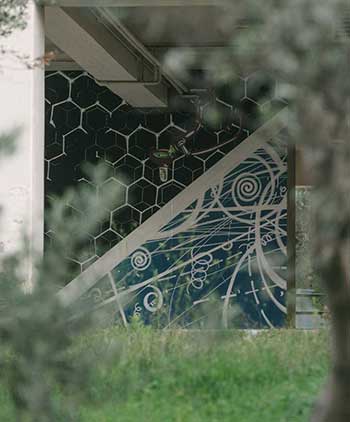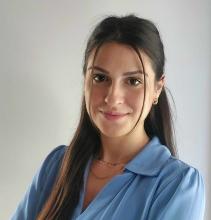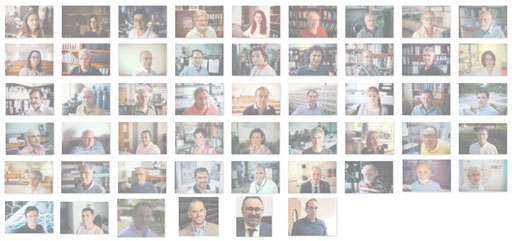- Τμήμα
Διοίκηση

- Προσωπικό
- Σπουδές
Σπουδές στο ΤΧΜ
Προπτυχιακά
Διπλωματικές Εργασίες
Μεταπτυχιακά
Διδακτορικό Δίπλωμα (PhD)
- Γενικές Πληροφορίες
- Νέες Αιτήσεις
- Κανονισμός
- Μαθήματα
- Προφορική Παρουσίαση
- Έρευνα
- Υποστήριξη Διατριβής
- Προηγούμενες Διατριβές
- Πρόγραμμα Εξετάσεων
Μεταπτυχιακό Πρόγραμμα (MSc)
Διατμηματικό ΠΜΣ (MSc)
- Φοιτητές
- Απόφοιτοι
- Έρευνα

Ερευνητική Δραστηριότητα στο ΤΧΜ
- Νέα & Εκδηλώσεις

Ανακοινώσεις
PhD Thesis Defence Presentations - Christina Vasilakopoulou

Τίτλος Παρουσίασης (Presentation Title): Quantification of atmospheric organic aerosol sources using on- and off-line aerosol mass spectrometry
Presentation Type (Τύπος Παρουσίασης): Υποστήριξη Διδακτορικής Διατριβής
Ονοματεπώνυμο Ομιλητή (Speakers Full Name): Χριστίνα Βασιλακοπούλου
Προέλευση Ομιλητή (Speakers Affiliation): Department of Chemical Engineering, University of Patras
Seminar Room (Αίθουσα): Βιβλιοθήκη "Αλκιβιάδης Χ. Παγιατάκης"
Ημερομηνία: Τρί, 19 Δεκ 2023,
Ώρα:
17:00 - 20:00
Περίληψη (Abstract)
Exposure to high concentrations of atmospheric particulate matter (PM) can lead to major health problems including stroke, heart disease and lung cancer. Around 90% of the world population lives in places where air pollution exceeds the World Health Organization limits, and more than 4 million people die every year due to ambient air pollution. To decrease the levels of PM it is necessary to identify its sources in each area and to quantify their contributions.
In this work, an off-line aerosol mass spectrometer analysis technique has been developed in order to quantify the sources of organic aerosol. The off-line AMS technique has been evaluated in three different campaigns in Greece, two during winter (Athens and Patras) and one in the summer (Patras). Source apportionment analysis was performed in both the off-line and co-located on-line measurements and the results of the new approach were within 15% of the benchmark method that requires the presence of an extremely expensive AMS in each location. The innovation of the new method is that even if it uses water as a solvent, it is designed to mobilize a significant fraction of the water insoluble material, significantly reducing the uncertainty of the results.
In the second step of the work, specific sources of organic aerosol were studied. More specifically, the impact of wildfires on background air pollution in Europe during summer and their possible adverse-health effects were quantified. We were able to show that the contribution of wildfires to fine PM levels in Europe during summer is seriously underestimated. That is due to the rapid physicochemical transformation of these emissions to secondary oxidized organic aerosol with an accompanying loss of its organic chemical fingerprints. These atmospheric reactions lead to a regionally distributed background organic aerosol that is responsible for a significant fraction of the health-related impacts caused by fine particles in Europe and probably in other continents. These adverse health effects can occur hundreds or even thousands of kilometers away from the fires. We estimate that wildfire emissions are responsible for 15-22% of the deaths in Europe due to exposure to fine PM during summer.
Finally, the atmospheric oxidation of specific biogenic precursors was studied. Atmospheric simulation chamber experiments were conducted in order to study the secondary organic aerosol formation during the ozonolysis of four sesquiterpenes (δ-cadinene, β-caryophyllene, α-caryophyllene and α-humulene) and from the reactions of three first generation sesquiterpene ozonolysis products (β-nocaryophyllinic acid, 2-(2-carboxyethyl)-3,3-dimethylcyclobutanecarboxylic acid and 2-(2-methyl-6-oxoheptan-3-yl)-3,6-dioxoheptanαl) with the OH radical. The results showed that the first-generation products react rapidly and are converted to more oxidized compounds. Therefore, these first-generation products are not expected to be found in significant concentrations even in forested areas. The current practice of estimating the secondary organic aerosol from sesquiterpenes from their abundance leads to significant underestimation.
Σύντομο Βιογραφικό Ομιλητή (Speakers Short CV)
Education
Ph.D. in Chemical Engineering 2019-present
University of Patras, Greece
Diploma-Integrated Master in Chemical Engineering 2014 – 2019
University of Patras, Greece
Journal Papers
-
Vasilakopoulou, C. N., , Matrali, A., Skyllakou, K., Georgopoulou, M., Aktypis, A., Florou, K., Kaltsonoudis, C., Siouti, E., Kostenidou, E., Blaziak, A., Nenes, A., Papagiannis, S., Elefteriadis, K., Patoulias, D., Kioutsioukis, I., Pandis S. N.: Rapid transformation of wildfire emissions to harmful background aerosol, Nature pj Climate and Atmospheric Science, 2023 (under review).
-
Vasilakopoulou, C. N., Florou, K., Kaltsonoudis, C., Stavroulas, I., Mihalopoulos, N., and Pandis, S. N.: Development and evaluation of an improved off-line aerosol mass spectrometry technique. Atm. Meas. Tech., 16, 2837-2850, 2023, doi.org/10.5194/amt-16-2837-2023., 2023.
-
Aktypis, A., Kaltsonoudis, C., Patoulias, D., Kalkavouras, P., Matrali, A., Vasilakopoulou, C. N., Pandis, S. N. (2023). Significant spatial gradients in new particle formation frequency in Greece during summer. Atmos. Chem. Phys., 2023 (in press).
-
Aktypis, A., Kaltsonoudis, C., Skyllakou., K., Matrali., A., Vasilakopoulou., C. N., Florou., K., and Pandis. S. N.: Infrequent new particle formation in a coastal Mediterranean city during the summer, Atmospheric Environment, 302, 119732, 2023.
-
Vasilakopoulou, C., Stavroulas, I., Mihalopoulos, N. and Pandis, S. N.: The effect of the averaging period for PMF analysis of aerosol mass spectrometer measurements during off-line applications, Atmos. Meas. Tech., 15, 6419–6431, doi:10.5194/amt-15-6419-2022, 2022.
-
Kodros, J.K., Kaltsonoudis, C., Paglione, M., Florou, K., Jorga, S., Vasilakopoulou, C., Cirtog, M., Cazaunau, M., Picquet-Varrault, B., Nenes, A. and Pandis, S.N.: Secondary aerosol formation during the dark oxidation of residential biomass burning emissions. Environ. Sci.: Atmospheres, 2, 1221-1236, doi:10.1039/D2EA00031H, 2022.
-
Jorga, S. D., Florou, K., Kaltsonoudis, C., Kodros, J. K., Vasilakopoulou, C., Cirtog, M., Fouqueau, A., Picquet-Varrault, B., Nenes, A. and Pandis, S. N.: Nighttime chemistry of biomass burning emissions in urban areas: A dual mobile chamber study, Atmos. Chem. Phys., 21, 15337–15349, doi:10.5194/acp-21-15337-2021, 2021.
Conference Presentations
-
Vasilakopoulou, C. N., Matrali, A., Skyllakou, K., Siouti, E., Georgopoulou, M., Florou, K., Patoulias, D., Aktypis, A., Kaltsonoudis, C., Nenes, A., and Pandis, S. N: Rapid summertime transformation of biomass burning and other emissions to highly aged toxic background organic aerosol, American Association for Aerosol Research, Portland, Oregon, October 2023.
-
Vasilakopoulou, C. N., Blaziak, A., Florou, K., Kaltsonoudis, C., Matrali, A., Pavlidis, D., and Pandis, S. N: SOA formation from the ozonolysis of various sesquiterpenes and the photooxidation of their first-generation products, American Association for Aerosol Research, Portland, Oregon, October 2023.
-
Vasilakopoulou, C. N., Florou, K., Kaltsonoudis, C., and Pandis, S. N: Development and evaluation of an improved technique for off-line Aerosol Mass Spectrometer analysis, RI-URBANS annual meeting, Barcelona, October 2022.
-
Vasilakopoulou, C., Stavroulas, I., Mihalopoulos, N., and Pandis, S. N.: The effect of the averaging period for PMF analysis of aerosol mass spectrometer measurements during off-line applications, International Aerosol Conference (IAC), Athens, September 2022.
-
Vasilakopoulou, C. N., Florou, K., Jorga, S., and Pandis, S. N: Sources of organic particulate matter in Patras, Greece, International Conference on Meteorology, Climatology and Atmospheric Physics (COMECAP), Ioannina, September 2021.
-
Vasilakopoulou, C. N., Florou, K., Jorga, S., and Pandis, S. N: Sources of organic particulate matter in Patras, Greece using on- and off-line Aerosol Mass Spectroscopy, European Aerosol Conference (EAC), Hybrid, September 2020.



